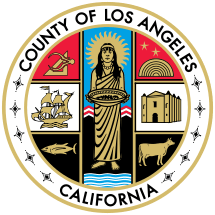John Anson Ford Amphitheatre
| Address | 2580 Cahuenga Blvd E |
|---|---|
| Location | Los Angeles, California |
| Coordinates | 34°6′49.76″N 118°20′7.9″W / 34.1138222°N 118.335528°WCoordinates: 34°6′49.76″N 118°20′7.9″W / 34.1138222°N 118.335528°W |
| Owner | County of Los Angeles |
| Type | Amphitheatre |
| Capacity | Amphitheatre: 1,200 |
| Opened | 1931 |
| Website | |
|
www | |
The John Anson Ford Theatres complex is situated in the Cahuenga Pass in Hollywood, California, and consists of a 1,200-seat outdoor amphitheatre. Located in a County regional park, the facility is owned and operated by the County of Los Angeles through a three-way partnership between the Los Angeles County Arts Commission, the Los Angeles County Department of Parks and Recreation and the Ford Theatre Foundation.
History
John Anson Ford Amphitheatre was built in 1920 as the site of The Pilgrimage Play. The author, Christine Wetherill Stevenson, believed the rugged beauty of the Cahuenga Pass would provide a dramatic outdoor setting for the play. Together with Mrs. Chauncey D. Clark, she purchased the land along with that on which the Hollywood Bowl now sits. A wooden, outdoor amphitheatre was built on the site and the play was performed by noted actors every summer from 1920 to 1929, until the original structure was destroyed by a brush fire in October 1929.
The present theatre, constructed of poured concrete and designed in the style of ancient Judaic architecture to resemble the gates of Jerusalem, was built on the same site and opened in 1931.[1] The Pilgrimage Play was again performed there until 1964, interrupted only by World War II. In 1941 the land was deeded to the County of Los Angeles. The Pilgrimage Play continued to be presented until a lawsuit in 1964 forced its closure because of its religious nature.
In 1976, the Pilgrimage Theatre was renamed the John Anson Ford Theatre in honor of the late LA County Supervisor's significant support of the arts. John Anson Ford (1883–1983) helped found the LA County Arts Commission, encouraged the Board of Supervisors to support the building of The Music Center and led the County's acquisition of Descanso Gardens, among many other achievements. The 1,200 seat amphitheatre and an 87-seat indoor black box theatre built underneath the amphitheatre in 1971 were used intermittently for Shakespearean theater, jazz concerts and dance performances until former County Supervisor Ed Edelman revived the historic theatre, spurring the creation of the Ford Amphitheatre Summer Season (originally called "Summer Nights at the Ford") in 1993 and obtaining funding for capital improvements to the facility.
A program of the Los Angeles County Arts Commission, the Ford summer season was designed to enable Los Angeles County music, dance and theatre groups to produce successfully in a major venue. Unlike a typical presenting model, groups and producers are selected through a competitive application process and receive front of house, production and marketing support, while keeping the bulk of the box office proceeds. From that first summer series in 1993, the program has blossomed, supporting hundreds of local arts organizations and producers over the years.
Today, the Ford Theatres are dedicated to presenting a diverse roster of events representing music and dance styles reflective of the communities that comprise Los Angeles County. In addition to its multidisciplinary summer season, the Ford presents interactive participatory arts events at its amphitheatre in Hollywood and at public sites across the County, making it a hub where Angelenos can experience genuine LA.
References
- ↑ Hardy, Jerry (23 March 2014) "Renewal+Restoration—Restoration Made Easy with Laser Scanning" LiDAR News (Frederick, Maryland)
